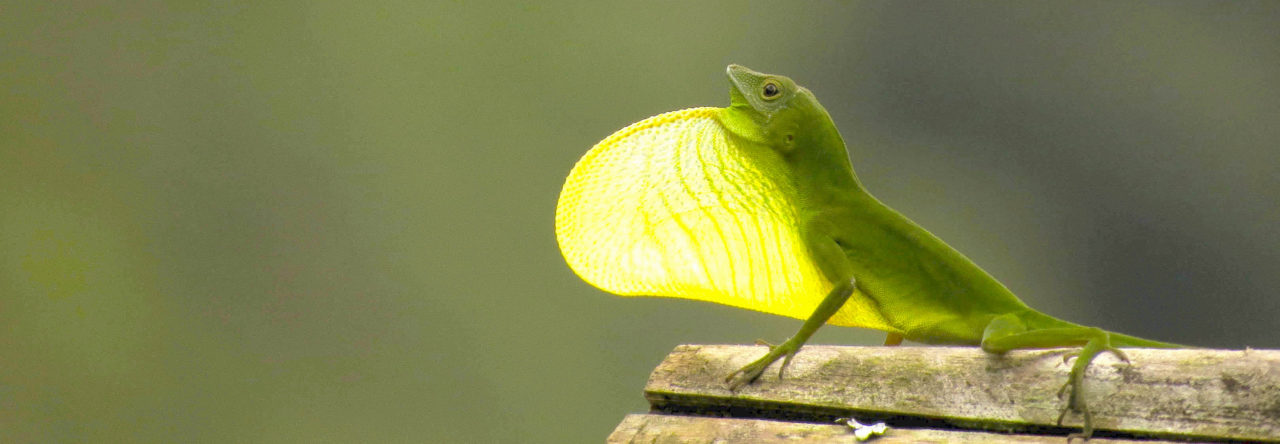 This letter was just received from Dr. Jennifer Rahn (jlrahn@gmail.com):
This letter was just received from Dr. Jennifer Rahn (jlrahn@gmail.com):
Hi Anole friends,
We think we have some strange anole behavior on Saba (Dutch Caribbean) this week. No one has seen the indigenous Saba Anole (Anolis sabanus) with this blue belly before. Have any of you heard of it in other species? We think it may be a stray species from a nearby island, unless of course it is some alpha male or other strange but infrequent anolis behavior.
Please let us know if you can explain this to us.
Curious Sabans
Any thoughts? It’s definitely A. sabanus (sometimes called the “panther anole” in the pet trade, and one of my favorite species).
- Evolution in Real Time on Lizard Island - March 23, 2025
- Spider Snags Adult Anolis osa - March 22, 2025
- An Homage to the Green Anoles of New Orleans - March 21, 2025


Neil Losin
Here in FL, we sometimes see anoles with patches of skin missing (lost, I assume, during fights or during predation attempts by larger lizards or birds). When skin is lost without damaging the underlying tissue, the underlying tissue has a distinctly blue appearance. Given the blackened skin around the edge of the blue patch — this often happens around wounds — and the visibility of what could be ribs in the blue area, this male could just have a very large patch of skin torn off.
Jonathan Losos
I brought this to an attention of a lizard scholar, who opined “the visibility of the ribs males me think that this is the melanin of the peritoneal lining viewed through the essentially skinless flank.”
Joe Burgess
I agree, this is an injury.